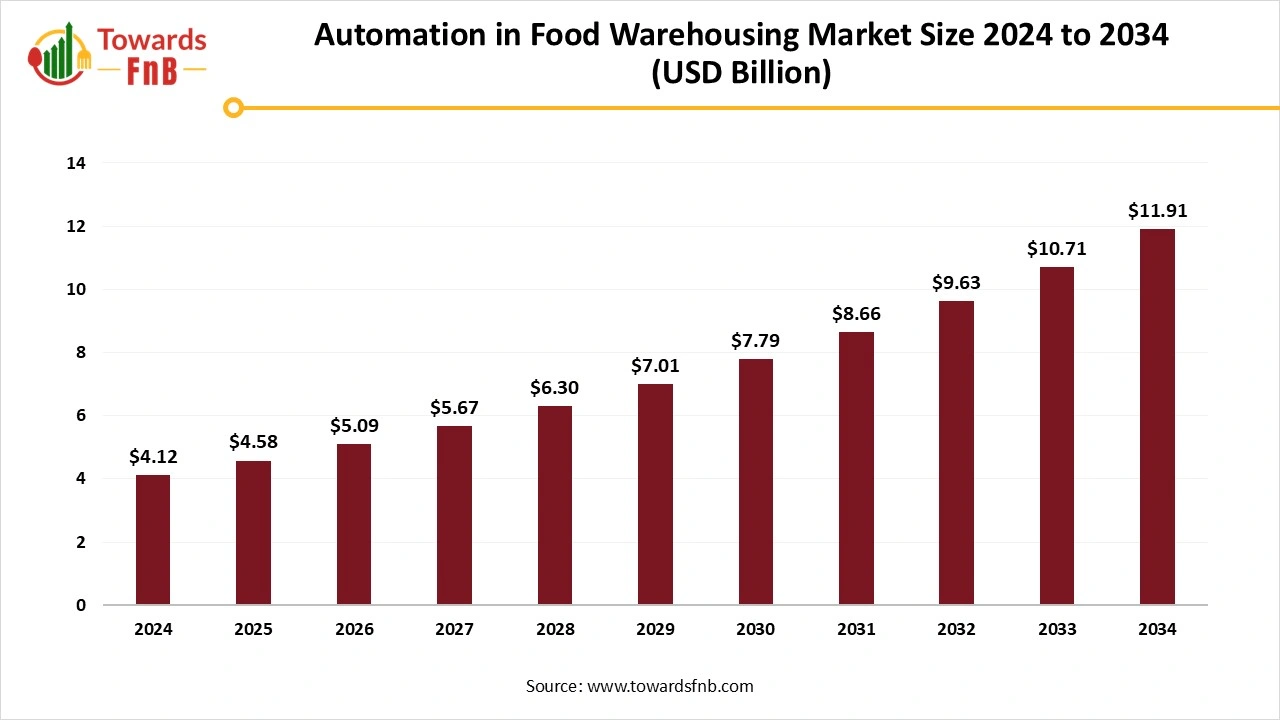The global automation in food warehousing market is projected to grow from USD 4.58 billion in 2025 to approximately USD 11.91 billion by 2034, according to a report by Towards FnB, a sister firm of Precedence Research. The market is expected to expand at a CAGR of 11.2% during the forecast period, driven by labor shortages, cold chain expansion, and the growth of e-commerce grocery platforms.
Automation technologies such as automated storage and retrieval systems (AS/RS), conveyor and sortation systems, and robotic picking and packing are contributing to the efficiency of warehouse operations. These systems enable precise inventory tracking, optimize storage conditions, and reduce manual handling, especially in temperature-sensitive environments. AI and IoT are also playing a key role in enhancing predictive management and real-time monitoring of storage conditions.
North America dominated the market in 2024, supported by the widespread adoption of automation technologies to manage rising order volumes from online platforms. The Asia Pacific region is projected to experience significant growth due to increasing investments in automated warehousing infrastructure.
Among warehouse types, the cold storage segment led the market in 2024 due to the need for reliable storage of frozen and perishable goods. Fulfillment centers are expected to grow in the coming years, aligned with the rise of e-commerce. By application, inventory management held the largest market share, while order picking and fulfillment is anticipated to expand rapidly.
In terms of food types, packaged and frozen foods accounted for the largest market share in 2024. The meat, poultry, and seafood segment is expected to grow due to the need for temperature-controlled handling and food safety compliance. Food manufacturers were the leading end users in 2024, while e-commerce grocery platforms are projected to grow due to increased consumer demand for online grocery services.
On-premises deployment dominated in 2024, offering greater control over infrastructure and data. However, cloud-based solutions are forecasted to expand due to their scalability and lower upfront costs.
According to the report, “Automation technologies not only enhance efficiency but also help maintain food safety standards through real-time monitoring and predictive systems.”
Read More
